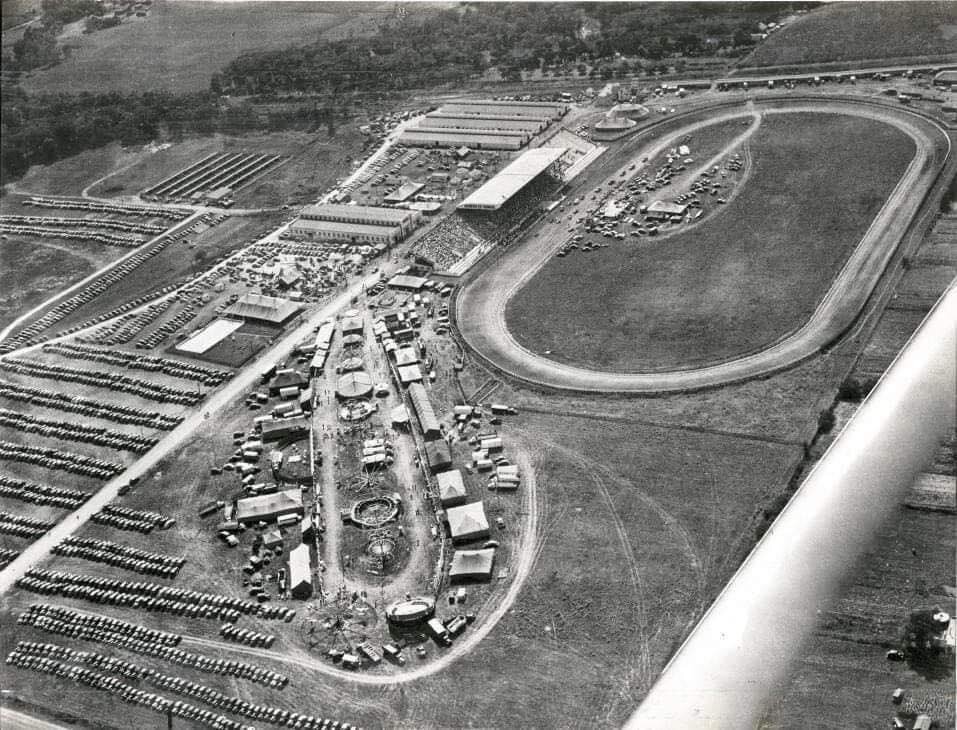
The History of Hawkeye Downs
About Hawkeye Downs Speedway and Expo Center
Started in 1925 as Frontier Park, Hawkeye Downs quickly became a hit across the Midwest with a dirt track. The 1989 season saw the track become Iowa’s first weekly paved oval with paved pits, an enclosed tech building, MUSCO lighting, and many other outstanding features. Nearly 100 years after opening, Hawkeye Downs Speedway and Expo Center is the only full-time weekly asphalt track in Iowa.
For nearly 100 years, Hawkeye Downs has been a popular venue for regional and national racing series, including ASA, IMCA, NASCAR, ARCA Midwest Tour, and the American Indycar Series. Hawkeye Downs Speedway and Expo Center is Eastern Iowa’s premiere 1/2 and 1/4 asphalt racing venue and offers over 35,000 square feet of event space in the Expo Center. Events at Hawkeye Downs include weekly racing, enduro racing, drag racing, and drifting, as well as trade shows, meetings, conventions, concerts, auctions, weddings, and private events that attract more than 100,000 visitors annually. Hawkeye Downs operates as a 501(c)3 non-profit in the state of Iowa.
At the end of 2022, the 92 acre property that the Hawkeye Downs’ expo center and racetrack currently sit on was acquired by PRKG 2492 LLC. The racetrack and expo center are leased and operated by Hawkeye Downs, Inc., a nonprofit organization ran by a board of volunteers. The remaining property is utilized by a variety of businesses and organizations and is managed by the landowner.
For decades, Hawkeye Downs has been considered the crowned jewel of short-track racing in the Midwest and remains active as a great resource for quality outdoor and indoor family entertainment. To keep up on current happenings at the Hawkeye Downs Speedway and Expo Center, follow us on Facebook and Instagram.
Our Mission
To provide and manage quality facilities for entertainment, educational, business, and cultural activities to benefit the community and visitors
Our Vision
To be recognized as a thriving racetrack and event center in the Linn County area that provides valuable space to host a wide variety of outdoor and indoor events
History happened here
More history of Hawkeye Downs Speedway and Expo Center coming soon…
Regional Economic Impact Study
This is a regional economic impact assessment prepared for the Cedar Rapids Metropolitan Statistical Area (i.e., Linn, Benton, and Jones counties).
Visitor spending represents a significant area of positive economic impact for motorsports facilities. Similar studies were reviewed to help identify how new consumption results in the City’s regional economy from tourism generated by Hawkeye Downs. Consequently, analysis is based on growth assumptions relating to the following categories of sales revenue: a) racetrack operations, b) retail trade, c) travel and lodging, and d) restaurant dining.
The main findings are highlighted here for ease of reference:
Annual visitation to Hawkeye Downs supports 175 jobs directly on-site and at retail/hospitality establishments in Linn County.
A further 58 jobs are supported in the local supply chain and through household spending in Linn County.
Visitors generate $1.99 million annually in local, state, and federal tax revenue.
For every dollar workers earn at Hawkeye Downs, a further $1.78 goes into the local economy of Linn County.
Each job onsite at Hawkeye Downs supports 1.39 jobs in the broader local economy.
Total cumulative annual economic impact of Hawkeye Downs is $27.8 million in 2022.
Cedar Rapids experienced job losses in the retail and hospitality industries due to the impact of the COVID-19 pandemic. This means growth in tourism development, such as the events and activities at Hawkeye Downs, are critically important to the City’s economic recovery.
*A full report is available upon request. Analysis performed by Mr. David Connolly in August 2022. Given the stability of programming and events at Hawkeye Downs, it is fair to assume that the impact reflected for the fiscal year 2022 (ending 12/31/22) is similar to the economic impact that would be realized for both the current fiscal year (ending 12/31/23) and the prior fiscal year (ending 12/31/21).

